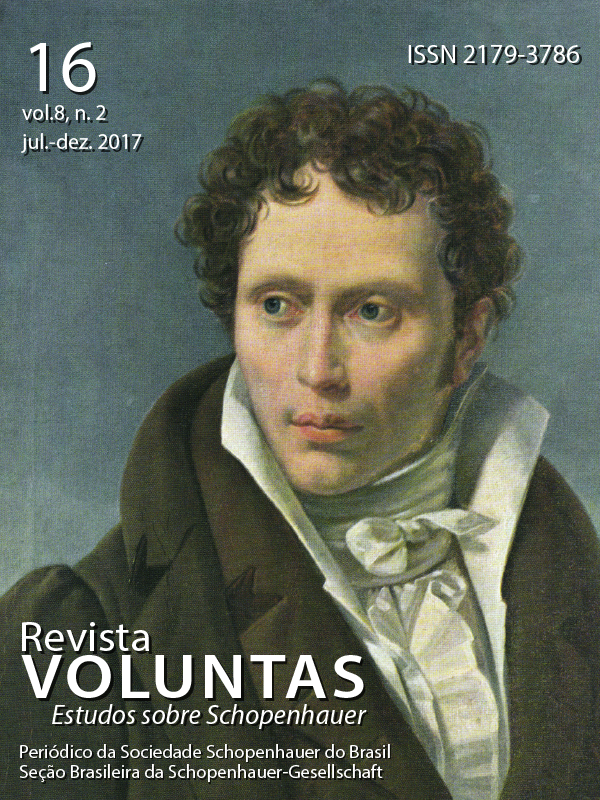Resignation as tragic effect: Schopenhauer’s theory of tragedy
DOI:
https://doi.org/10.5902/2179378633605Keywords:
Schopenhauer, Resignation, Tragedy, SublimeAbstract
To make clear the conjunction between tragic and resignation, at first will be presented the signification of resignation as a consequence of the tragic from the comparison with dynamic sublime. Before then will be explored the contraposition between antike and modern tragedy, when also will be considered Nietzsche’s accusation according to wich Schopenhauer would not have perceived the affirmative dimension of Greek tragedy.
Downloads
References
ARISTÓTELES. Poética. Trad. Paulo Pinheiro. São Paulo: Editora 34, 2015.
GOETHE, J.W. Fausto, uma tragédia – Primeira parte. Trad. Jenny Klabin Segall. São Paulo: Editora 34, 2004.
GOETHE, J.W. Fausto, uma tragédia – Segunda parte. Trad. Jenny Klabin Segall, 2ª Ed. São Paulo: Editora 34, 2008.
KANT, I. Crítica da faculdade do juízo. Trad. António Marques e Valério Rohden, 2ª Ed. Rio de Janeiro: Forense Universitária, 1995.
NIETZSCHE, F.W. Ecce homo – ou como alguém se torna o que é. Trad. Paulo César de Souza. São Paulo: Companhia das Letras, 1995.
NIETZSCHE, F.W. O nascimento da tragédia ou helenismo e pessimismo. Trad. J. Guinsburg. São Paulo: Companhia das Letras, 1992.
RILKE, R.M. Sonetos a Orfeu / Elegias de Duíno. Trad. Emmanuel Carneiro Leão. Petrópolis, RJ: Vozes, 1989.
SCHOPENHAUER, A. O mundo como vontade e representação – Primeiro tomo. Trad. Jair Barboza. São Paulo: Editora da UNESP, 2005.
SCHOPENHAUER, A. O mundo como vontade e representação – Segundo tomo (Suplementos). Trad. Jair Barboza. São Paulo: Editora da UNESP, 2015.
SÓFOCLES. Édipo em colono. Trad. Trajano Vieira. São Paulo: Perspectiva, 2005.
SZONDI, P. Ensaio sobre o trágico. Trad. Pedro Süssekind. Rio de Janeiro: Jorge Zahar Editor, 2004.
Downloads
Published
How to Cite
Issue
Section
License
The submission of original manuscripts to this journal implies the transference, by the authors, of the copyrights for printed and digital publication. The copyrights of a published manuscript belong ultimately to the author, and only the copyright for its first publication is reserved to the journal. Authors may only use the same results in other publications explicitly indicating this journal as the medium of the original publication.
Licence
Attribution-NonCommercial-ShareAlike 4.0 International (CC BY-NC-SA 4.0) - This license lets others remix, tweak, and build upon your work non-commercially, as long as they credit you and license their new creations under the identical terms.






